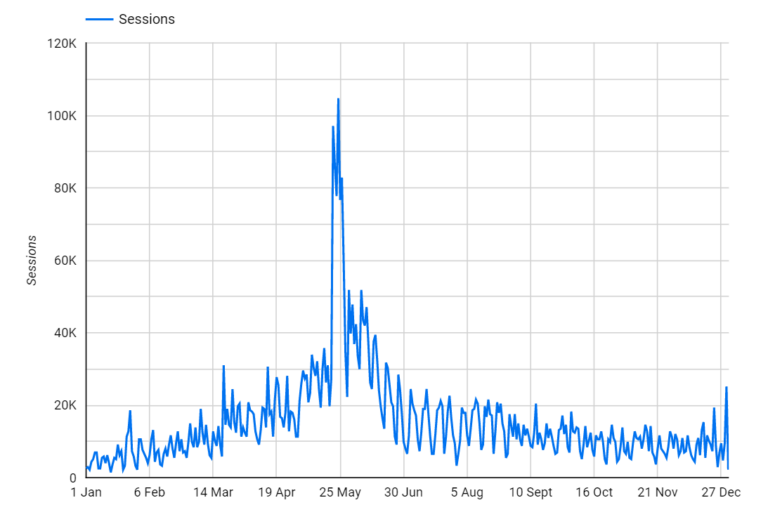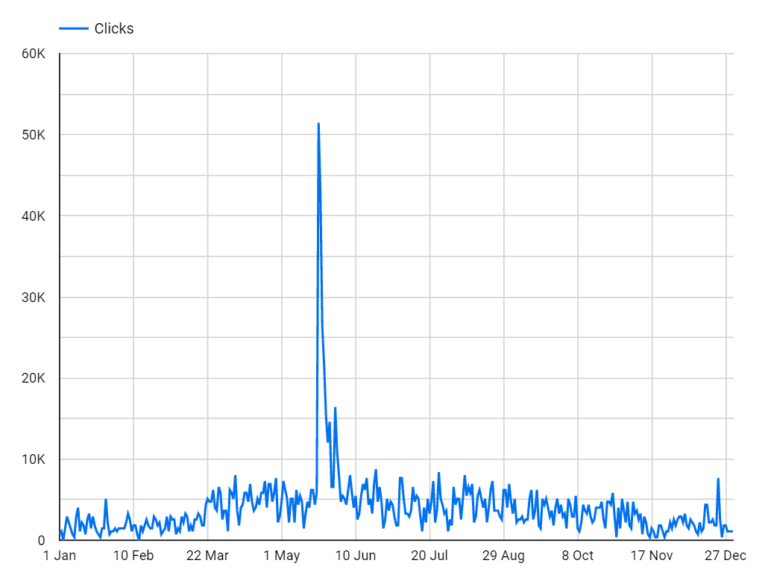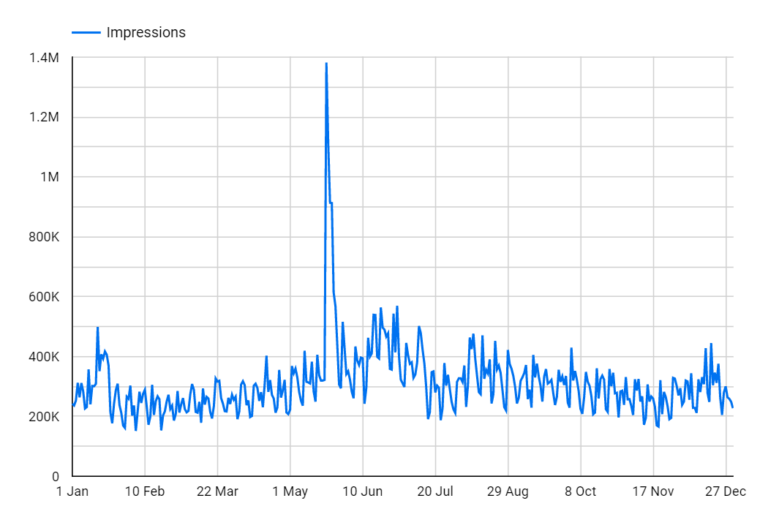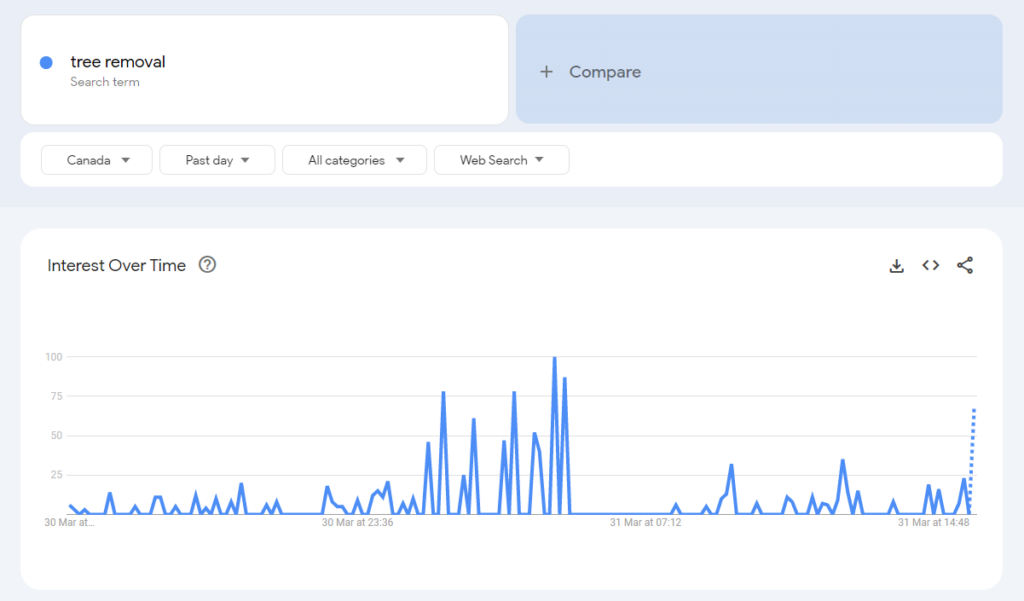Are Tree Removal Searches Seasonal?
TL:DR: Yes. But it’s way more interesting than you might think.
Seasonality is something every business owner is familiar with. From roofers to software developers, from dentists to accountants everyone has busy and quiet months.
But how do you quantify this beyond gut feel?
This is the first article in a series I’ll be creating that breaks down seasonality based on real data. I’ll try to answer the question, “is this busy period expected or am I as a business owner doing something right?” I’ll start with tree removal and use aggregated real data from Google analytics and Google search console. I’ll identify busy periods, slow periods, any day-to-day trends and compare it to the publicly available Google Trends data. But first, take a look at these graphs:
Google Analytics - Sessions

Google Search Console - Clicks

Google Search Console - Impressions

Google Trends

A Quick Analysis on Tree Removal Seasonality
Tree removal appears to be seasonal in two areas:
Time of Year
Day of Week
Unfortunately, as with many industries, Google Trends is not the most useful tool in measuring seasonality. Tree removal just doesn’t have the volume for the tool to work correctly. That said, it does capture the basic gist showing April and May as the period with the most interest.
Outliers
There’s one, massive, obvious outlier: May 21st to May 23rd. The explanation is actually rather simple: that’s the long weekend in May in Ontario and there was a massive storm. When looking at this initially, I was stumped. It goes against other trends, such as search being decreased on weekends, and it’s significantly larger than other spikes caused by storms.
So I went beyond the data shown here and looked at previous years where I found a similar massive spike took place. Over the May long weekend, there is usually 3-4 times the search for tree removal in Ontario. The storm last year just amplified the jump.
Other anomalies are also observed in the winter months when traffic is expected to be the lowest. There are occasional jumps that last a day or two. I compared weather charts with these days, and it does appear that major storms cause a jump in traffic during the slow periods from November to mid February. These jumps still don’t reach the busy months, but are notable.
What Do Our Clients Say?
I interviewed our account managers who work with our tree removal clients, and overwhelmingly they all felt that April was the start busy season. This aligns with what I’ve observed over the past decade; clients tend to be slightly late on their ‘busy’ season believing that it begins later than the data shows. There could be a number of reasons for this, my personal belief being they judge seasonality based on how busy they are individually, rather than by the quantity of incoming sales/requests. This would explain why it takes a few weeks of increased business for them to feel ‘busy’.
Another common remark is that tree removal slows down considerably starting in October. October appears to be the start of the down season, so they’re correct in this case. The only interesting note is that the slow down actually starts early in August. Clearly, there is a threshold of search that becomes obvious to tree removal company owners; more data will be needed to determine that on a case-by-case basis.
The Forest For the Trees - Take-Aways
As marketers or business owners, there are some easy take aways from this information that you can use to optimize your marketing efforts:
- Start marketing more heavily as early as February, to make the most of the upswing in search.
- Serious SEO related changes or website launches should take place in October or earlier to allow time for the dust to settle and rankings to climb.
- Budgets for the May long weekend should be significantly increased, and any one-time campaigns on social media, radio, TV etc. will work best leading up to this time period.
With these three take-aways, even at the most basic level you can make the most of the seasonal nature of tree removal.
Limitations of the Analysis
With any statistical analysis there are limitations based on the data you have available. Here are the main limitations and what they might mean for your tree removal company:
- Location: Our data is primarily from Ontario, Canada. With a service such as tree removal the above information is going to look very different depending on climate.
- Time: The above information is limited to one year; a more in-depth analysis would include multiple years of data.
- Sample size: While the above information does cover tens of thousands of sessions and millions of impressions, it still is primarily from 5 businesses.



